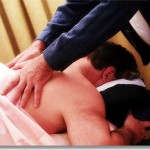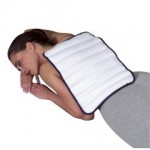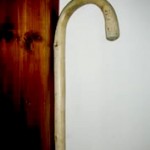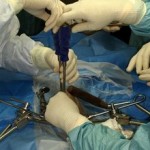Spinal stenosis is a condition where there is a narrowing in one or more areas in the spine. This may affect the lower back or the neck.
Spinal stenosis is a narrowing in some parts of the spinal column. This condition puts excessive pressure on the spinal nerves and on the spinal cord.
The nerves affected may differ from one patient to another but generally, spinal stenosis can cause numbness or pain in the back, arms, shoulders and legs. A person with spinal stenosis may observe weakness of the limbs, loss of sensation in major extremities and problems in the bowel or bladder.
Oftentimes, spinal stenosis is caused by the age related factors. If the spinal stenosis brings too much pain or if it affects day-to-day activities, doctors may recommend surgery to create space in the spinal nerves.
What are Causes of Spinal Stenosis?
Several factors cause spinal stenosis. Some of the known reasons for spinal stenosis may include:
- Spinal stenosis is often caused by arthritis of the spine. This usually affects those in the middle age or older people.
- Disk degeneration is also another culprit of developing spinal stenosis. The jelly like substance, which is often found in the disk, may protrude as one ages. This may put pressure on the spinal cord thus resulting to spinal stenosis.
- Paget’s disease can also cause spinal stenosis. With Paget’s disease, the body abnormally forms new bone in a faster rate but the bone it produces are usually deformed. If the weak bone produced were found in the spine, this would result to less space in the spinal canal.
- The condition of achondroplasia may likewise result to spinal stenosis. Achondroplasia is a genetic disorder, which is rooted during fetal development and may result to dwarfism.
- Tumors in the spine may also compress the spinal canals and nerve endings.
- Severe injuries like accidents and trauma may also damage the spine thus resulting to pressure in the spinal nerves.
What are the Symptoms of Spinal Stenosis?
Symptoms of spinal stenosis may differ depending on the affected area. The most common area affected is the neck and the back. The severity of the symptoms may also vary.
Some of the symptoms of spinal stenosis may include:
- Tingling sensation in the hand, arm and in the legs.
- Pain in the neck
- Shoulder pain
- Problems in bowel control
- Incontinence
- Cramping in the legs
What are the Treatments of Spinal Stenosis?
Treatments of spinal stenosis may vary depending on the location and the severity of the symptoms. Here are some treatments of spinal stenosis.
1. Medications
 Oral medications are given to patients to reduce pain. At first onset of symptoms, over the counter medications are used to ease the pain.
Oral medications are given to patients to reduce pain. At first onset of symptoms, over the counter medications are used to ease the pain.
When the pain is severe and affects the daily activities of a person, your health care provider may also suggest other medications to relieve the pain.
2. Physical Therapy
 Physical therapy is also widely recommended for spinal stenosis. In this type of therapy, a licensed physical therapist will help the patient to build strength and endurance through proper exercise. These exercises will help develop spine stability and flexibility. Physical therapy sessions may also improve balance and may help in reducing the pain.
Physical therapy is also widely recommended for spinal stenosis. In this type of therapy, a licensed physical therapist will help the patient to build strength and endurance through proper exercise. These exercises will help develop spine stability and flexibility. Physical therapy sessions may also improve balance and may help in reducing the pain.
3. Apply heat or cold
 If spinal stenosis affects the neck area, you may apply heat or cold packs. Hot or cold packs may reduce soreness in the neck.
If spinal stenosis affects the neck area, you may apply heat or cold packs. Hot or cold packs may reduce soreness in the neck.
4. Use canes
 You may use canes if the spinal stenosis affects the lower back. Canes may lessen the pressure in the lumbar area.
You may use canes if the spinal stenosis affects the lower back. Canes may lessen the pressure in the lumbar area.
5. Injections
 If there are severe inflammation in the area, injections may be recommended, however, this type of injections may weaken other bones, so ask first your health care provider if this is good for your condition.
If there are severe inflammation in the area, injections may be recommended, however, this type of injections may weaken other bones, so ask first your health care provider if this is good for your condition.
6. Lose extra weight
 Extra weight adds additional pressure to the joints and spine especially in the lumbar area. If the patient is overweight, the symptoms may worsen overtime because of the added pressure in the spine. Losing extra weight may likely to lessen the severity of the symptoms.
Extra weight adds additional pressure to the joints and spine especially in the lumbar area. If the patient is overweight, the symptoms may worsen overtime because of the added pressure in the spine. Losing extra weight may likely to lessen the severity of the symptoms.
7. Surgery
 Surgery is recommended if all medications and therapies do not help the patient. However, the patient should be in good health condition otherwise, surgery is not recommended. Ask first your doctor about the pros and cons of surgery regarding to your condition.
Surgery is recommended if all medications and therapies do not help the patient. However, the patient should be in good health condition otherwise, surgery is not recommended. Ask first your doctor about the pros and cons of surgery regarding to your condition.
These are the several treatments available to spinal stenosis. Check with your health care provider if you feel that your condition is severe and the severity of the symptoms worsen overtime.
